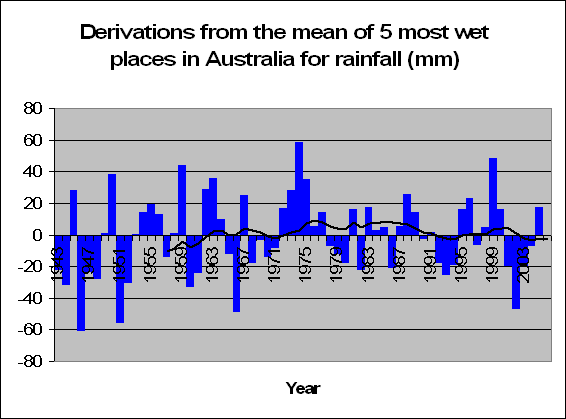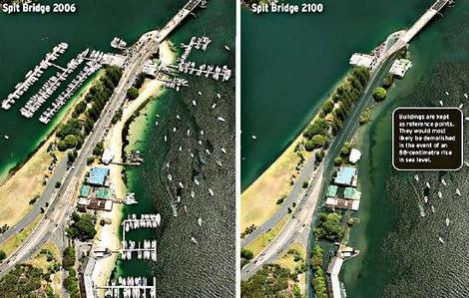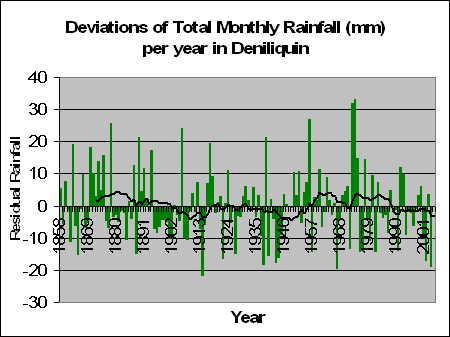In fact, the ABM actually agree with us as well:
http://www.bom.gov.au/lam/climate/levelthree/climch/clichv4.htm
Because of the large year-to-year changes it is hard to detect any long-term trends in Australian rainfall.
But continue on saying:
However, some weak trends in rainfall have been identified. The percentage area of Australia experiencing extreme wet conditions has increased slightly this century while the area of extreme dryness has reduced.
Ahh, so despite the fact that global warming isn’t making Australia dryer, it’s climate change that is making the dryer places more dry and the wetter places more wet. Now we get you. So where’s the proof of this? Hmm…looks like there is none. If I remember correctly, their “weak trend” in regards to cyclones was proven non significant.
So where’s the proof of this? ABM don’t provide it, but using their own statistics, I decided to test it. From our sample we took the 5 most driest places in Australia, and the 5 most wet. These were as follows:
Most driest: MARREE (SA), WOOMERA (SA), CARNARVON (WA), TIBOOBURRA (NSW), MEEKATHARRA (WA).
Heard of them? No, that’s why no one lives there. There’s no water to flush the toilet.
Most Wet: COFFS HARBOUR (NSW), DARWIN (NT), BYRON BAY (NSW), THREDBO (NSW), CAIRNS (QLD).
Great places to Ski, surf, and well, wrestle with crocodiles.


And the results are the following two graphs for the most driest and most wet. To be honest. I can’t see any pattern whatsoever. But let’s test it anyway. Tests prove, that there is no significant increase or decrease in rainfall in the 5 most wet places in Australia (F = 0.66, p = 0.421) and there is also no significant increase or decrease in the amount of rainfall in the 5 driest places in Australia either (F = 1.37, p = 0.244).
So how did the ABM come to these conclusions that the dry is drying up and the wet is wetting up? Either they have terrible statisticians working for them (lets hope not), or they want to prove that climate change is, in fact, changing. I mean, there’s so much hype about it recently, that it’s possibly in the ABM’s best interests to prove that their work is ultra-important.
So why not claim that Australia’s rainfall patterns are changing more recently? Why not claim that because of this global warming results and humans are to blame? Why not claim that we have to act now or human civilization will be lost forever?
Why not? Because it all, quite possibly, could not be true.









